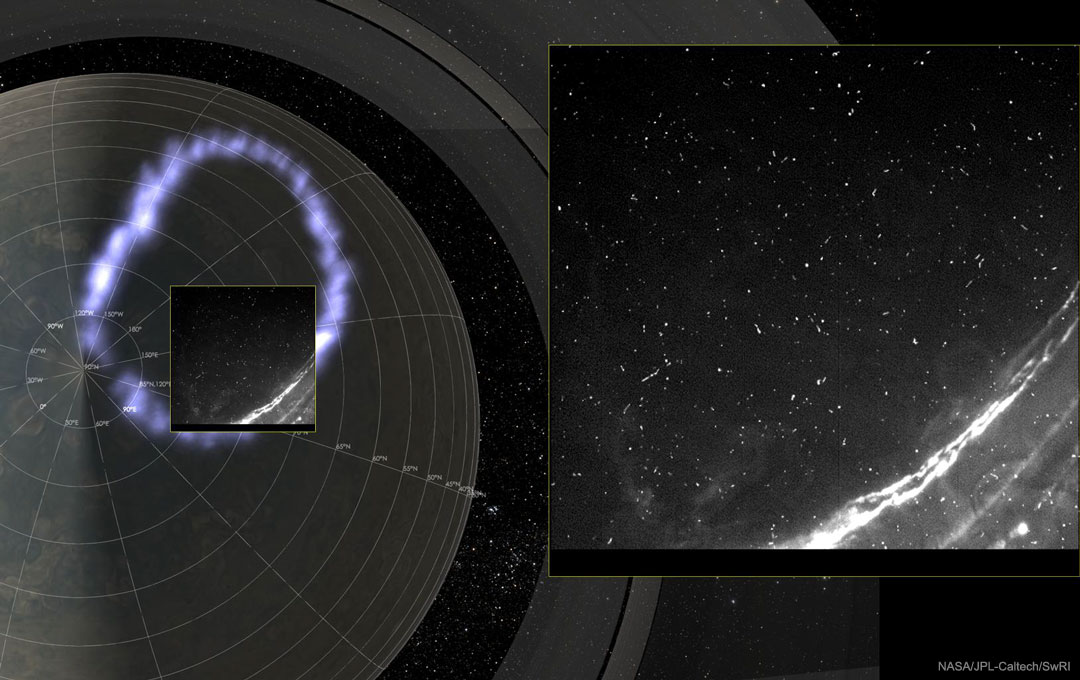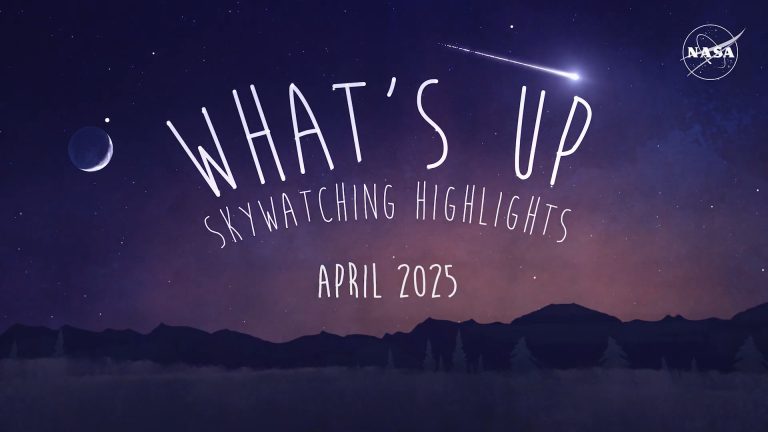2021年03月24日
Aurorae and Lightning on Jupiter
Image Credit: NASA, JPL-Caltech, SwRI; Text: Natalia Lewandowska
Explanation: Why does so much of Jupiter’s lightning occur near its poles? Similar to Earth, Jupiter experiences both aurorae and lightning. Different from Earth, though, Jupiter’s lightning usually occurs near its poles — while much of Earth’s lightning occurs near its equator. To help understand the difference, NASA’s Juno spacecraft, currently orbiting Jupiter, has observed numerous aurora and lightning events. The featured image, taken by Juno’s Stellar Reference Unit camera on 2018 May 24, shows Jupiter’s northern auroral oval and several bright dots and streaks. An eye-catching event is shown in the right inset image — which is a flash of Jupiter’s lightning — one of the closest images of aurora and lightning ever. On Earth (which is much nearer to the Sun than Jupiter), sunlight is bright enough to create, by itself, much stronger atmospheric heating at the equator than the poles, driving turbulence, storms, and lightning. On Jupiter, in contrast, atmospheric heating comes mostly from its interior (as a remnant from its formation), leading to the hypothesis that more intense equatorial sunlight reduces temperature differences between upper atmospheric levels, hence reducing equatorial lightning-creating storms.
APOD via Facebook in: in English, Catalan and Portuguese
Tomorrow’s picture: sol 3048
木星的极光及闪电
影像提供: NASA, JPL-Caltech, SwRI; 文稿: Natalia Lewandowska
说明: 为何木星的闪电大多发生在极区?类似地球,木星也有极光和闪电。然而,木星的闪电通常出现在极区,而地球的闪电则大多发生在赤道附近。为了厘清二者差异的源由,目前在绕行木星的美国航太总署.朱诺号太空船,记录了大量的极光和闪电事件。例如这幅由朱诺号恒星导航相机摄于2018年5月24日的主题影像,就呈现木星北半球的极光椭圆、数个亮斑和明亮线纹。影像右侧的嵌图,呈现其中一例特别吸睛,同时也是截自目前最近距的木星极光和闪电事件。在远比木星更近太阳的地球上,赤道大气受到明亮阳光的加热远强于极区,故赤道区有大量湍流、雷暴系统和闪电。然而在木星上,其大气的热源主要来自它形成后储存于内部的余热,因此假说认为赤道区较强的阳光,反而降低不同高度的高层大气之间的温差,导至木星赤道区少有能产生闪电的雷暴系统。
APOD通过Facebook以以下语言提供:英语、加泰罗尼亚语和葡萄牙语
明日的图片: sol 3048







